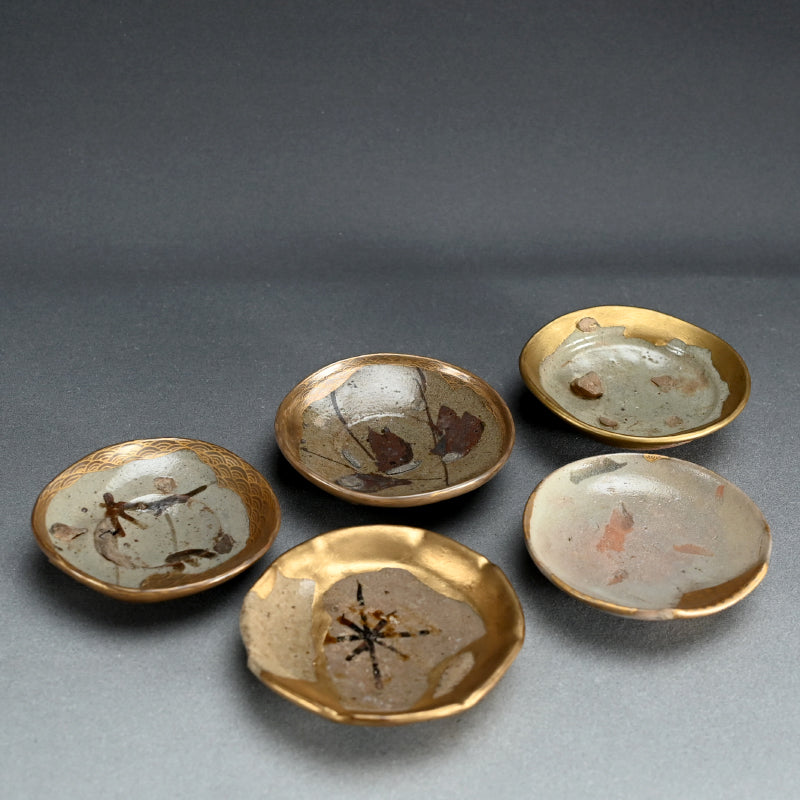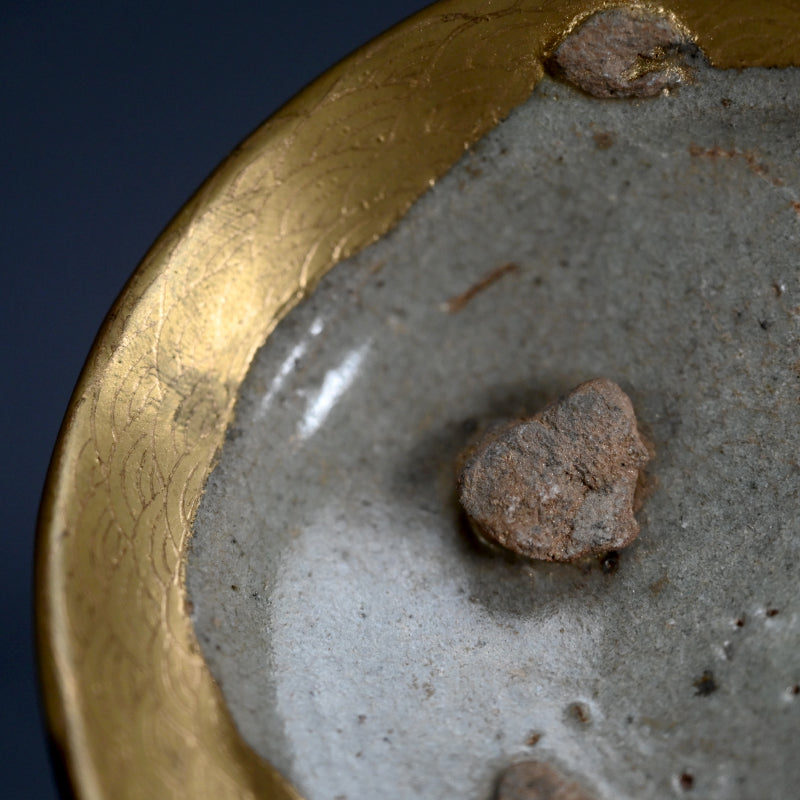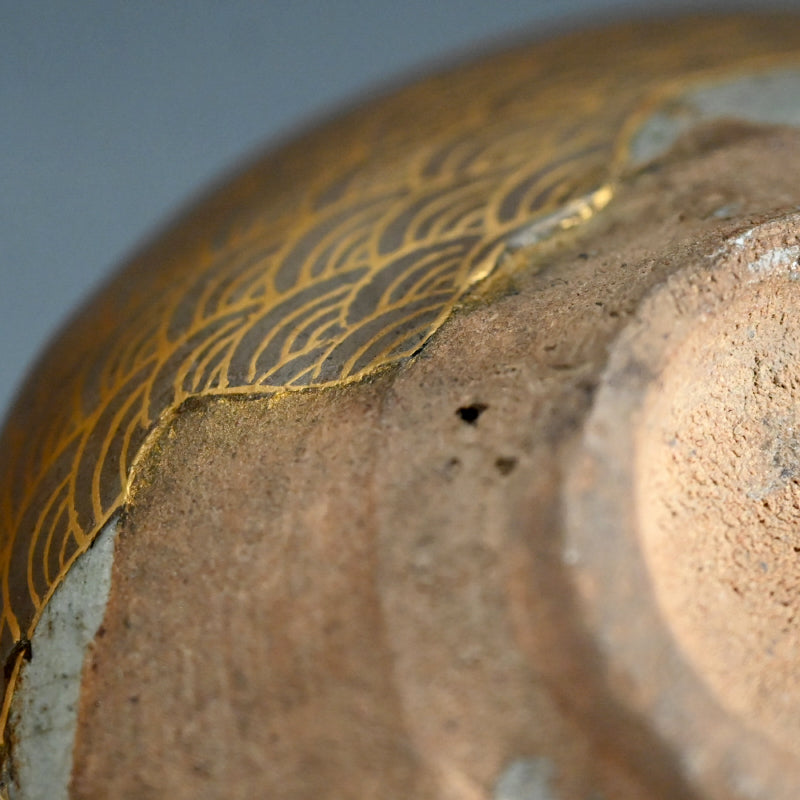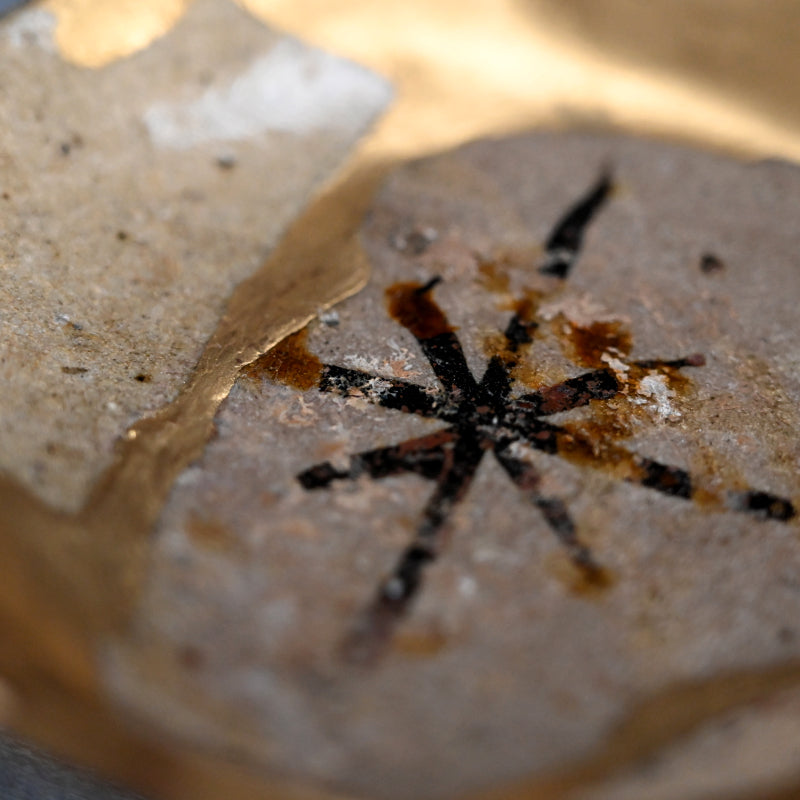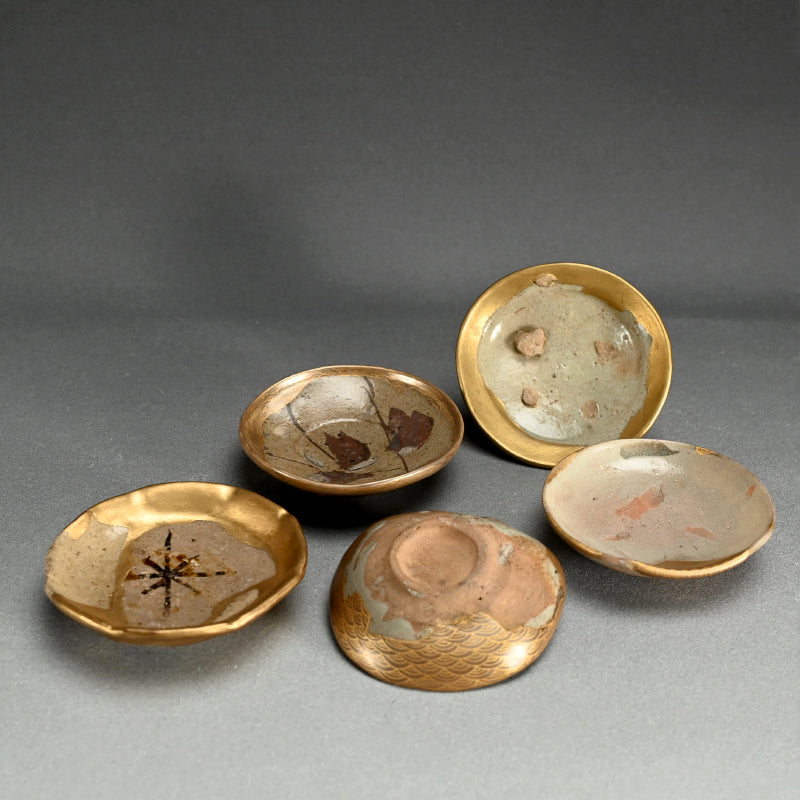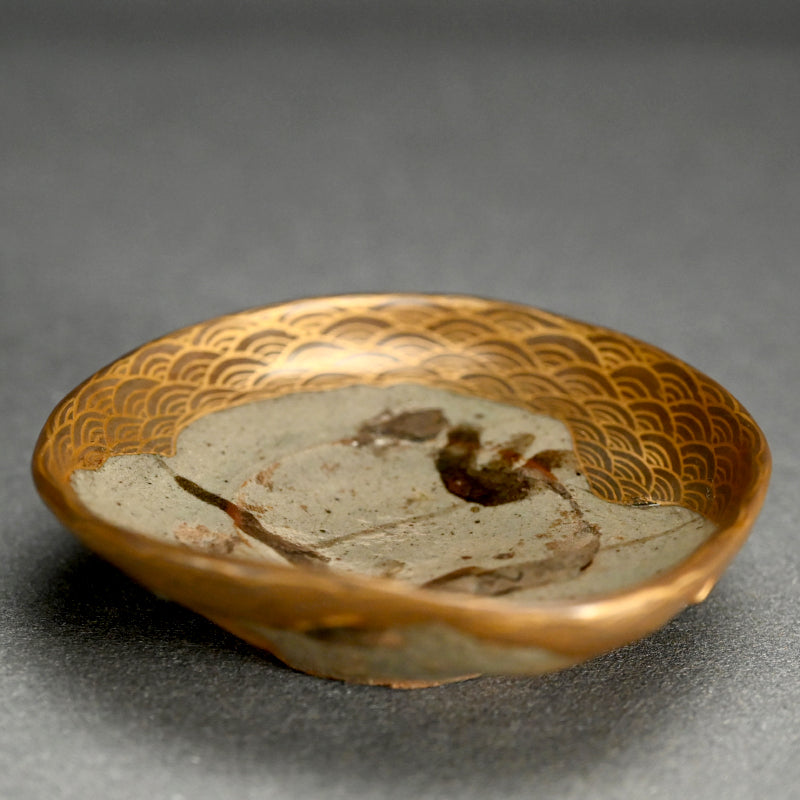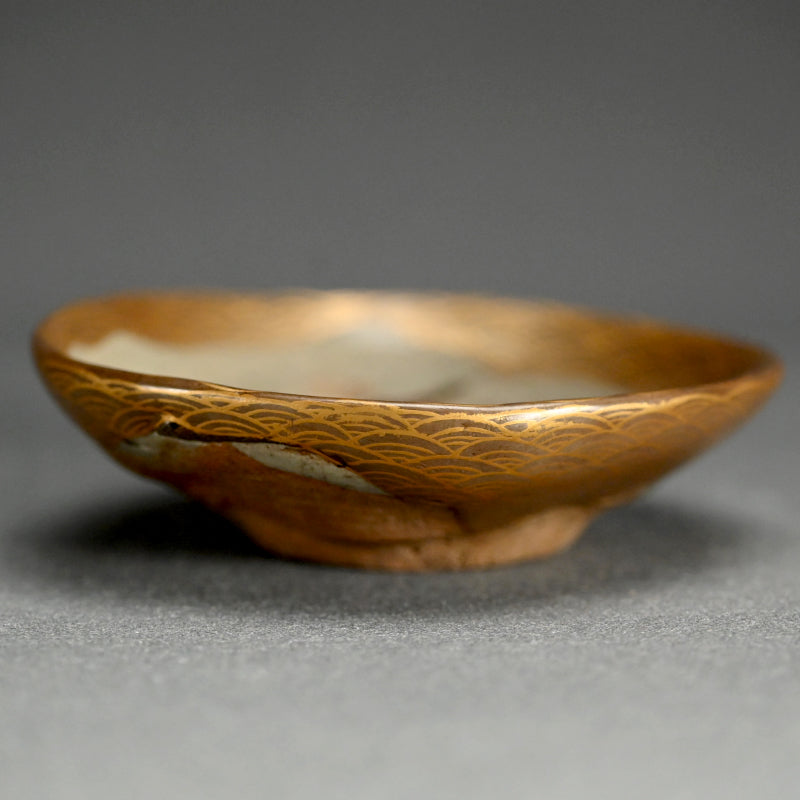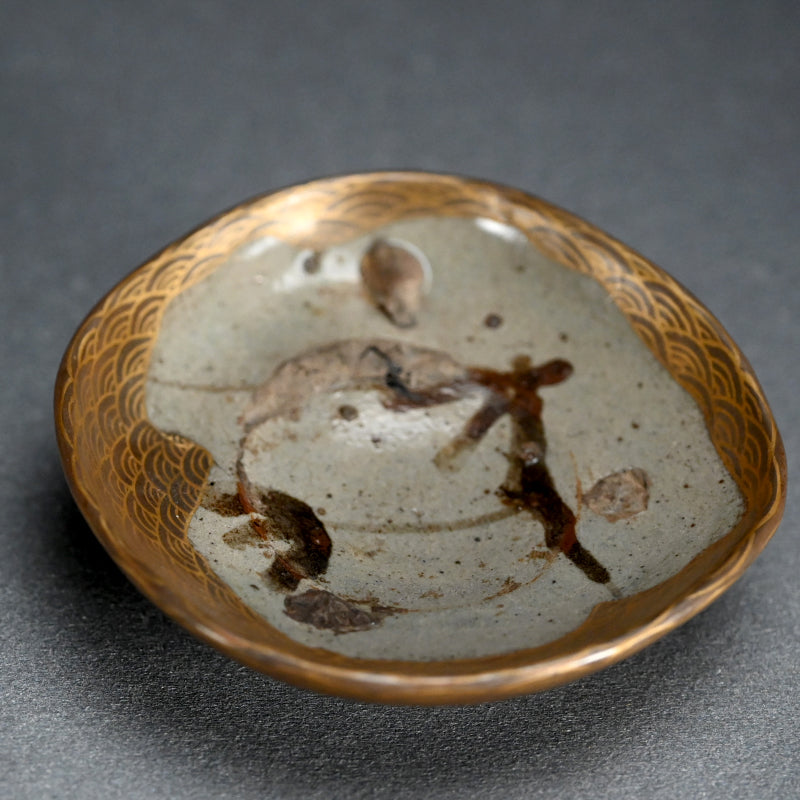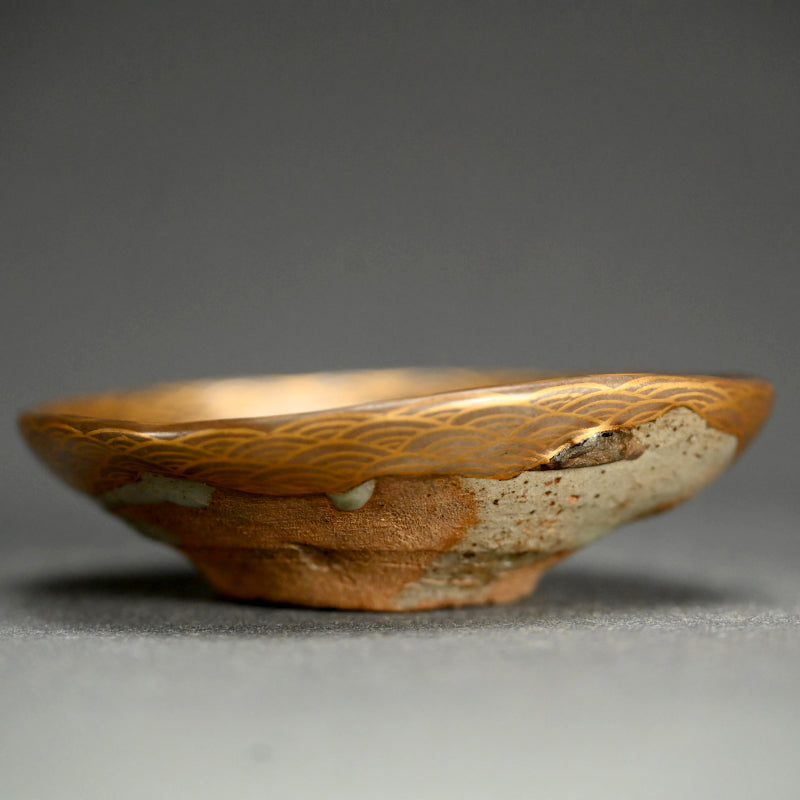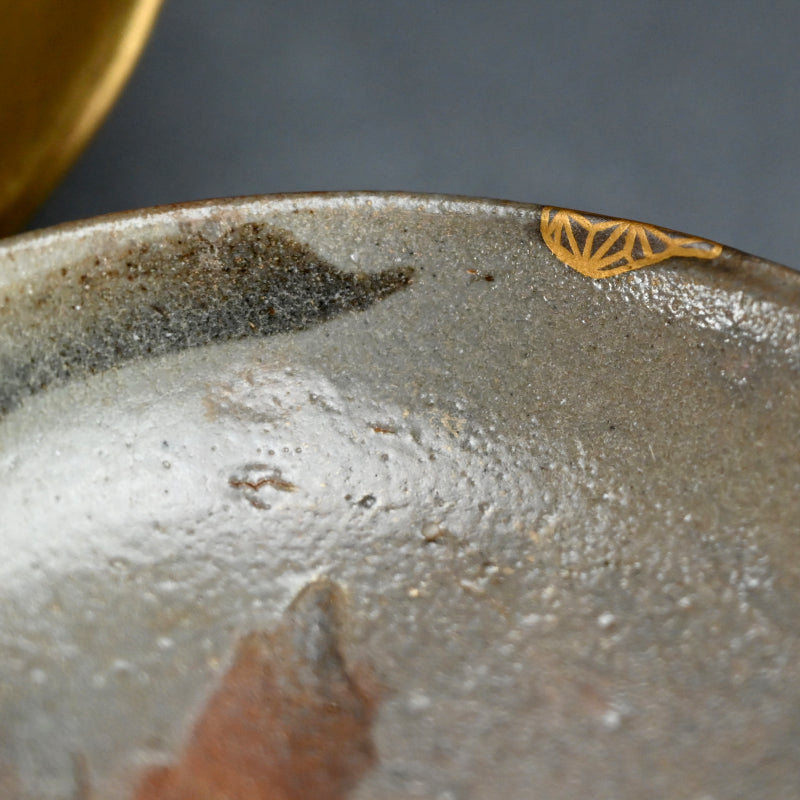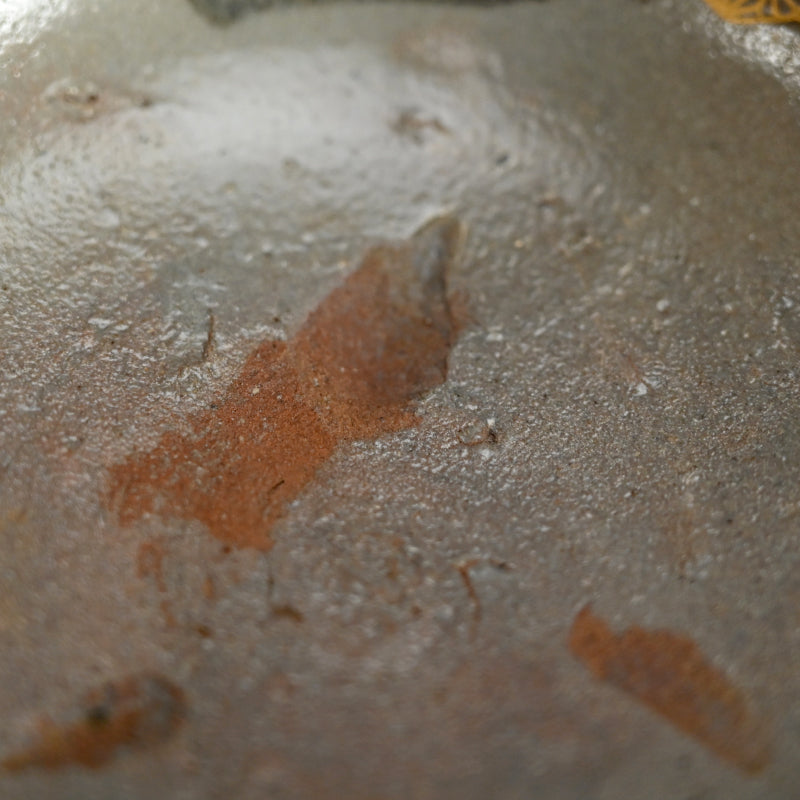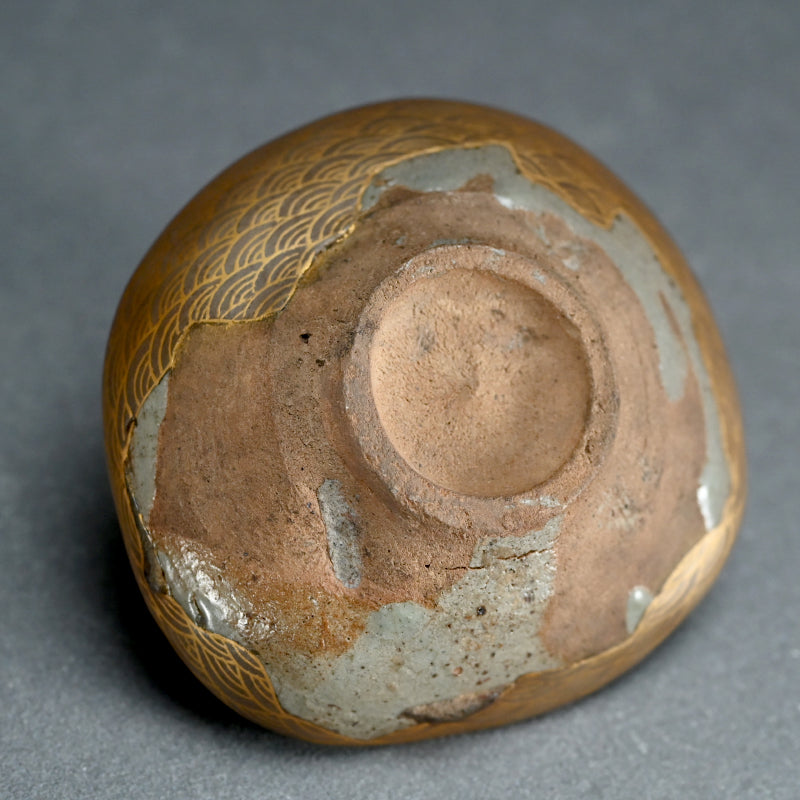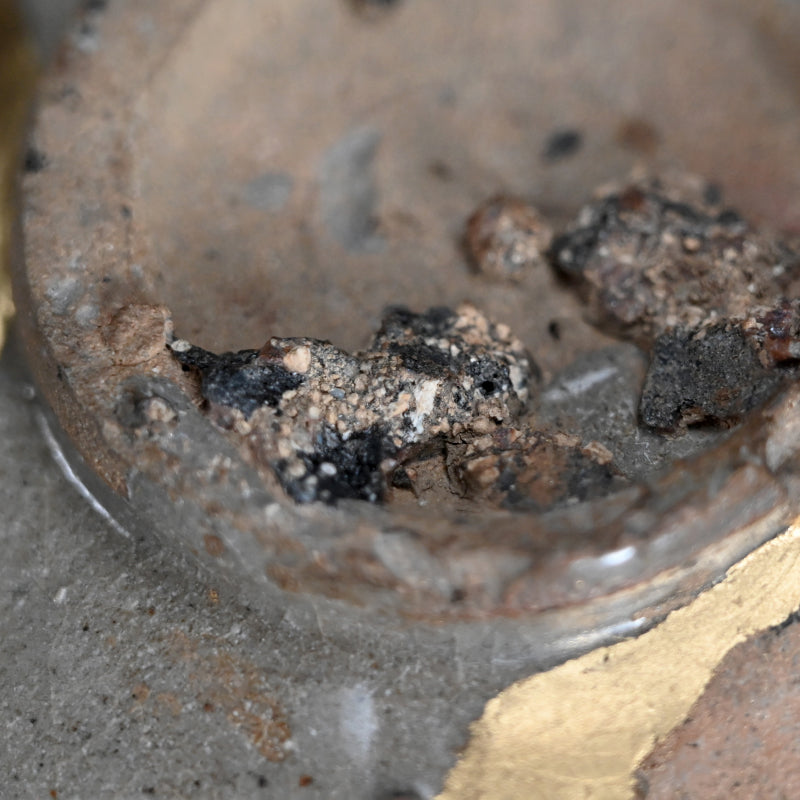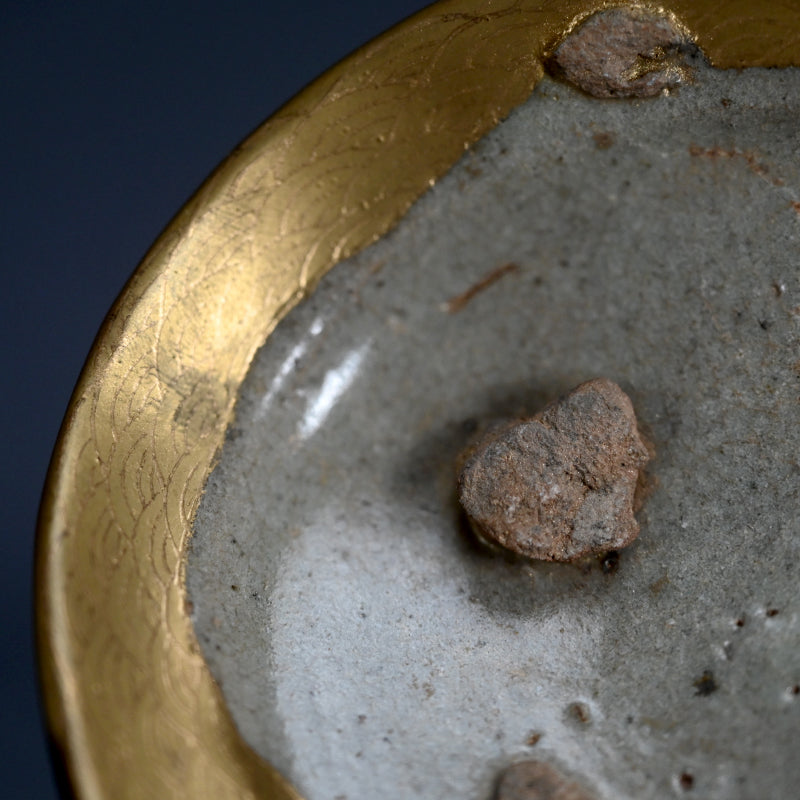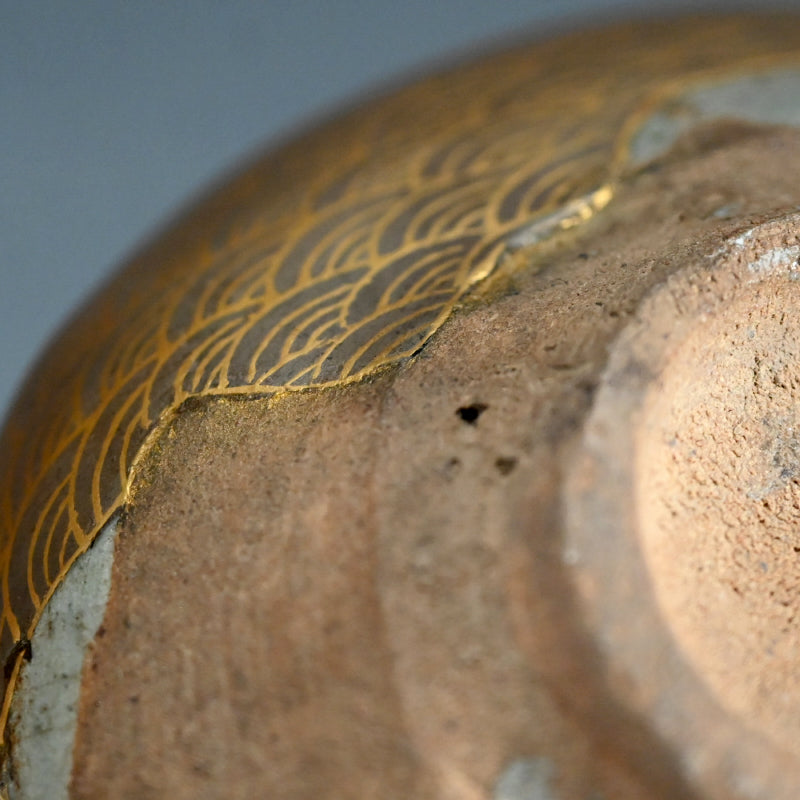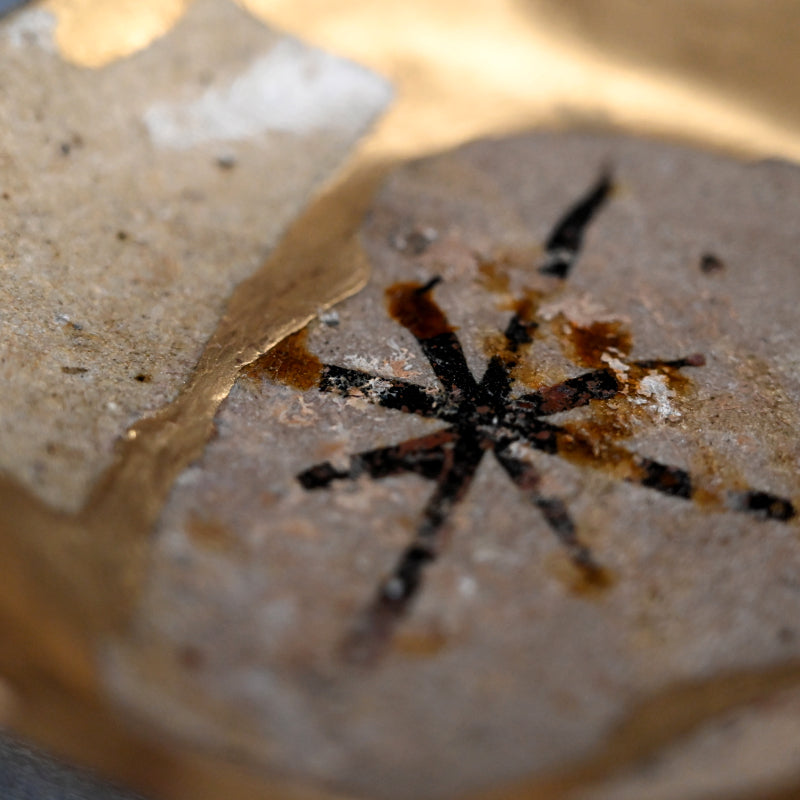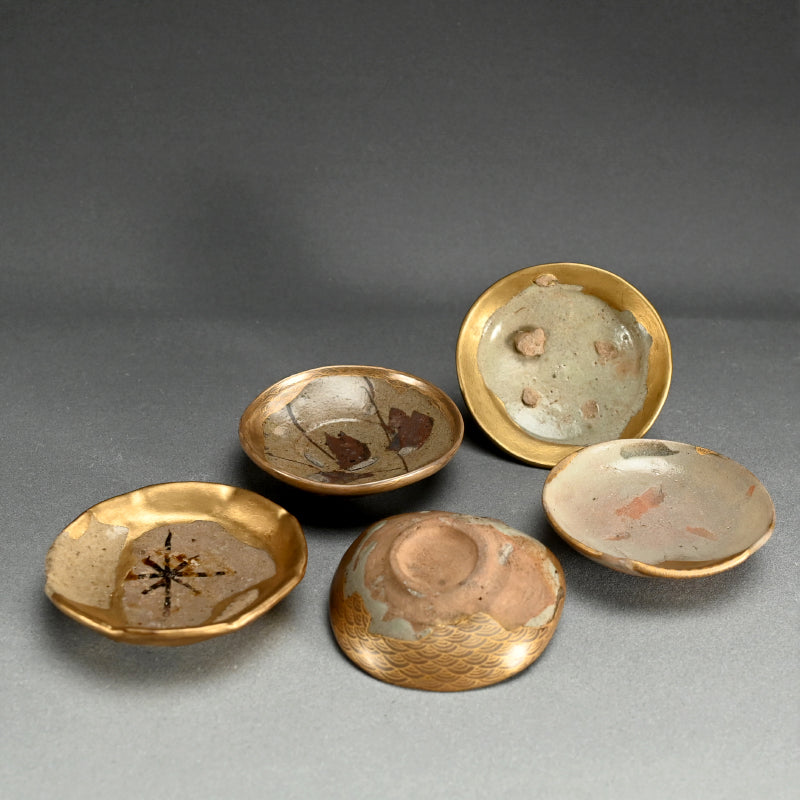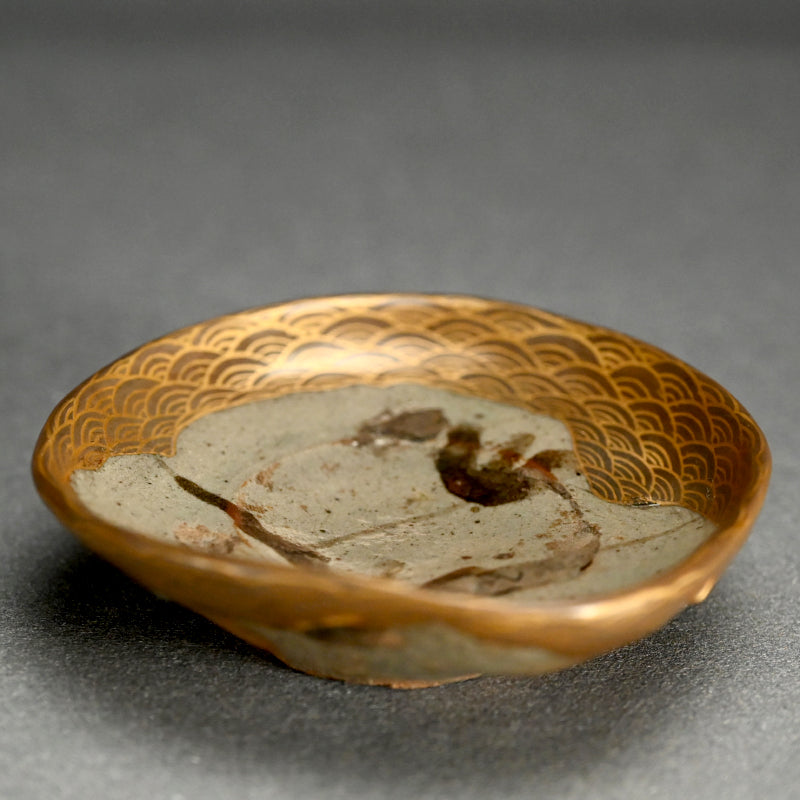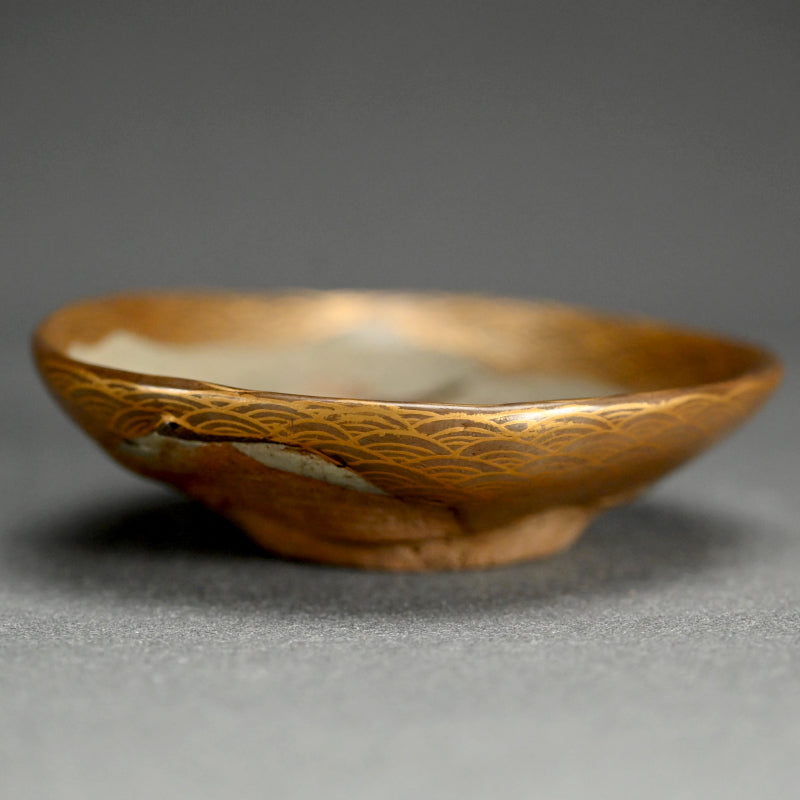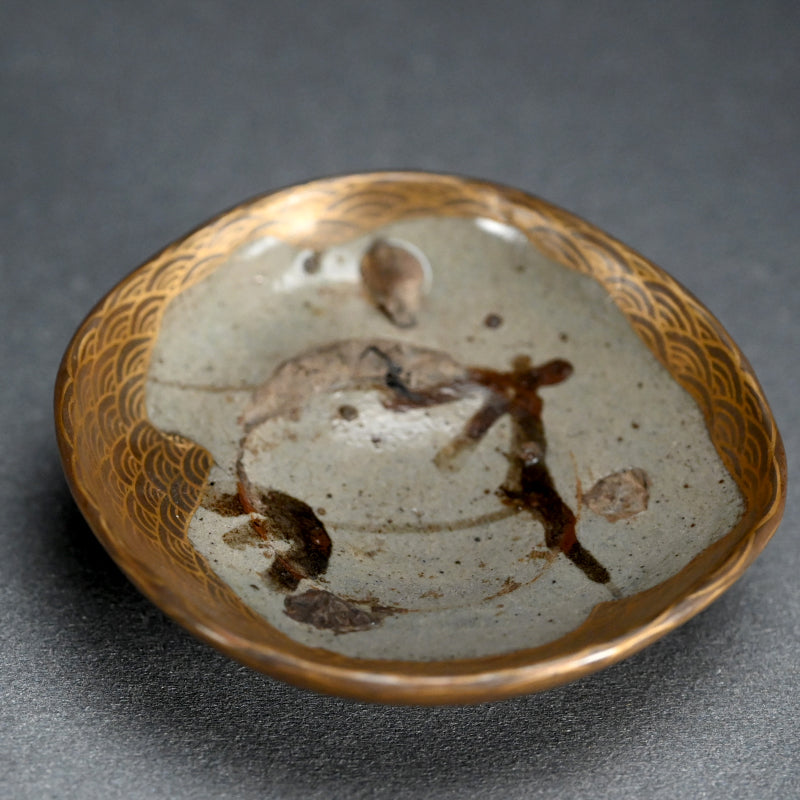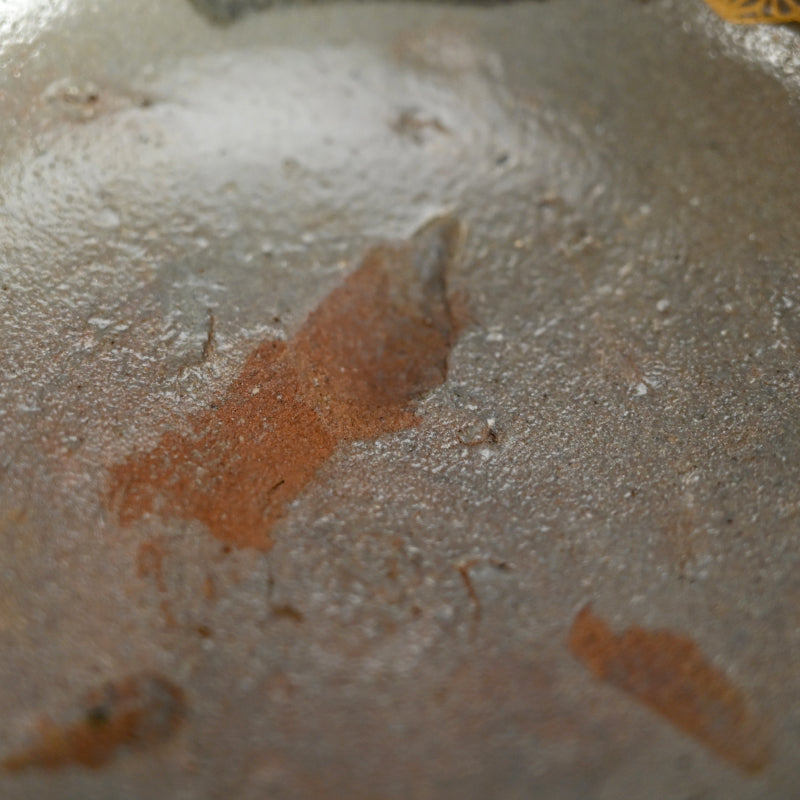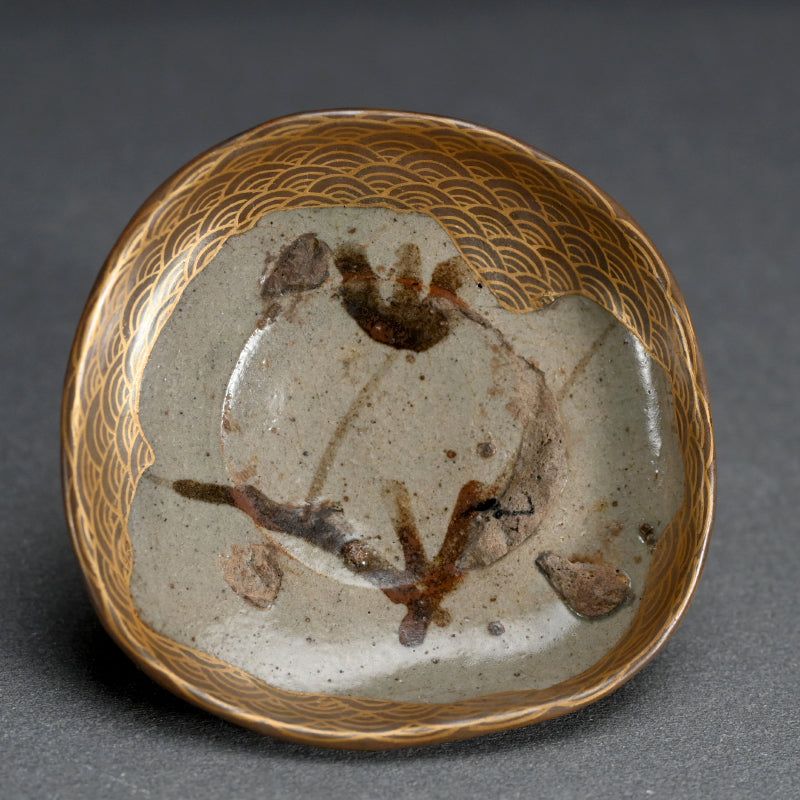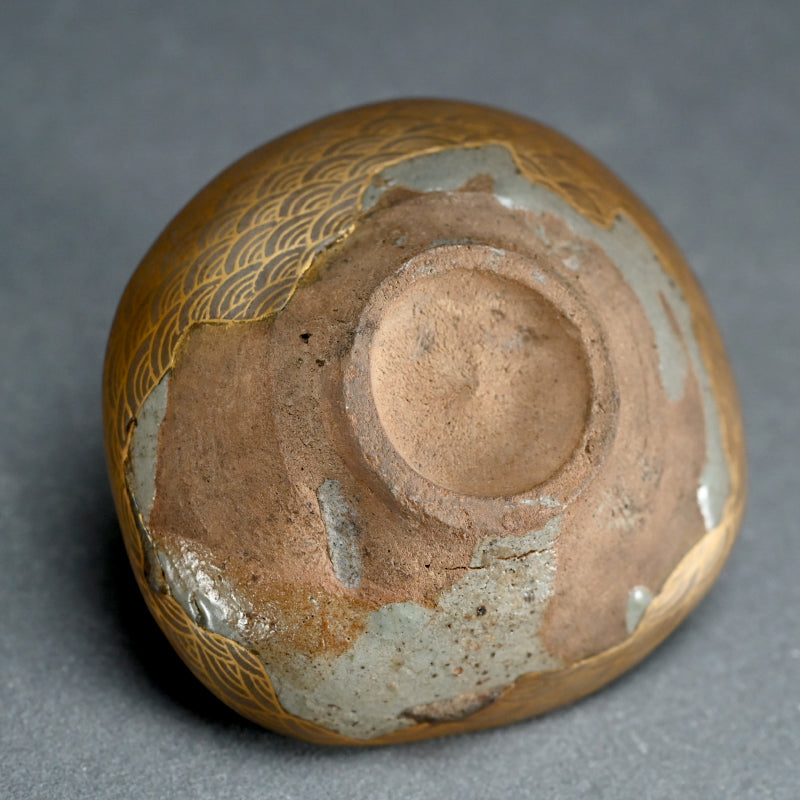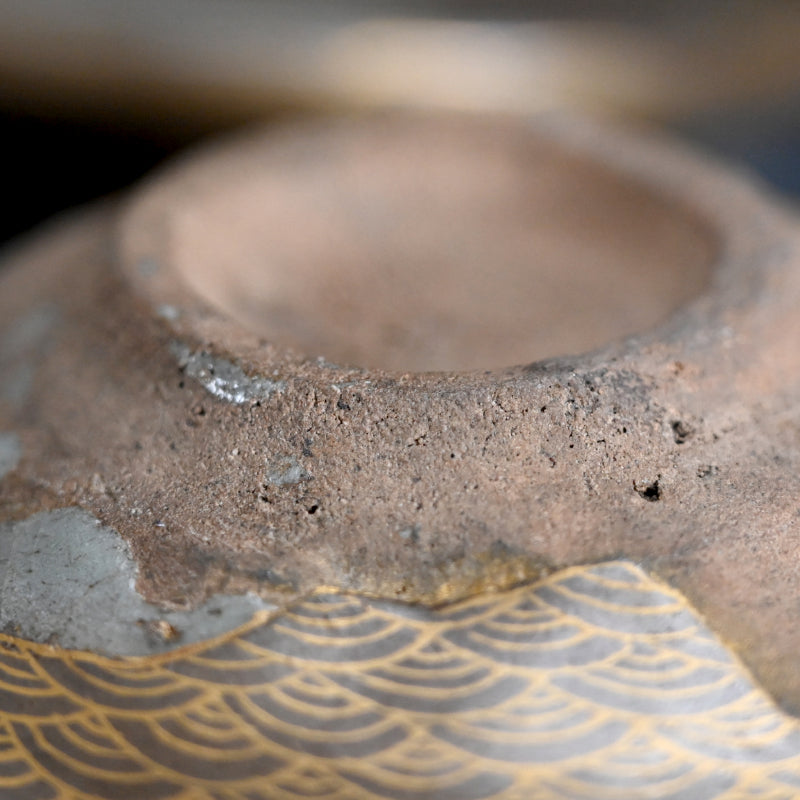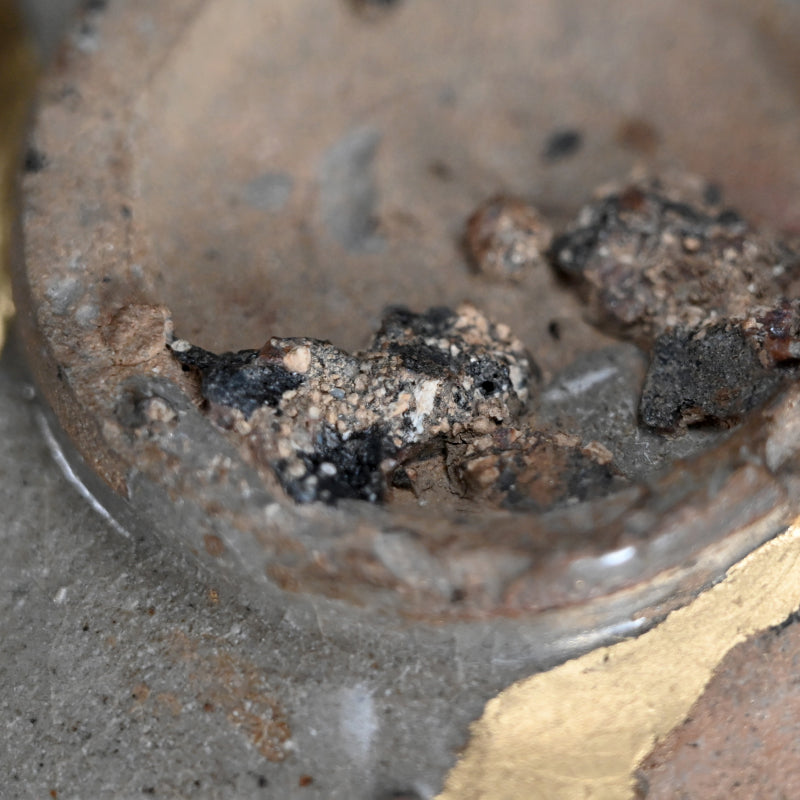1
/
of
15
Momoyama to Early Edo p. Karatsu Kintsugi Plate Set
Momoyama to Early Edo p. Karatsu Kintsugi Plate Set
Item Code: K703
Regular price
¥418,500 JPY
Regular price
Sale price
¥418,500 JPY
Unit price
/
per
Tax included.
Couldn't load pickup availability
An amazing amount of work (let along solid gold) has gone into this set of five 16th – 17th century Karatsu plates with lacquer repairs covered in gold, over which have been created designs of waves and other patterns. The largest dish is 12 cm (just less than 5 inches) diameter, the smallest 10.5 cm (just more than 4 inches) diameter.
Karatsu pottery (Karatsu-yaki) is a celebrated Japanese ceramic tradition that originated in the late 16th century in Karatsu, Saga Prefecture, on the island of Kyushu, heavily influenced by Korean pottery techniques brought over by artisans during the Azuchi-Momoyama period (1573–1603). Karatsu pottery is known for its understated, rustic aesthetic, often characterized by natural glazes, earthy tones, and minimal decoration. Its designs align with the Japanese concept of wabi-sabi, emphasizing simplicity, imperfection, and the beauty of natural forms. Popular styles include E-garatsu (painted Karatsu), Madara-garatsu (spotted Karatsu), and Chōsen-garatsu (Korean-style Karatsu). Initially, Karatsu ware was produced to serve the practical needs of daily life, including tableware, and storage jars. However, with the rise of the Japanese tea ceremony, it became highly sought after by tea masters for its organic beauty and suitability for the ritual.
Kintsugi lacquer gold repairs embody the spirit of wabi-sabi, a Japanese aesthetic worldview centered around imperfection, transience, and the beauty of the natural cycle of growth and decay. Embracing the flawed and broken aspects of an object through kintsugi is a way to appreciate the passage of time and the history of the object, recognizing that it gains value and character through its journey. Kintsugi aligns with traditional Japanese values of frugality and resourcefulness. Instead of discarding broken items, kintsugi repairs them, extending their lifespan and reducing waste. This approach reflects a profound respect for resources and a desire to cherish and honor the objects used in daily life. This is also a way to avoid offending the spirit of the object, as all items are embodied with a soul of some sort. The act of repairing broken pottery with gold-laced lacquer carries a symbolic message of resilience and overcoming adversity. The restored object becomes a metaphor for the human experience, highlighting that even after suffering damage or hardship, one can find beauty and strength through healing and renewal. In the context of the Japanese tea ceremony kintsugi plays a vital role in enhancing the overall aesthetic experience, especially during the tenth month. The practice of kintsugi encourages contemplation and introspection during the tea ceremony. Guests may be reminded of the impermanence of all things and the beauty that can arise from embracing life's scars and vulnerabilities. Overall, kintsugi holds a deep cultural and philosophical significance in Japanese culture, symbolizing beauty in imperfection, respect for resources, and the resilience of both objects and individuals. In the context of the tea ceremony, it enriches the aesthetics and fosters a sense of mindfulness and appreciation for the present moment.
Karatsu pottery (Karatsu-yaki) is a celebrated Japanese ceramic tradition that originated in the late 16th century in Karatsu, Saga Prefecture, on the island of Kyushu, heavily influenced by Korean pottery techniques brought over by artisans during the Azuchi-Momoyama period (1573–1603). Karatsu pottery is known for its understated, rustic aesthetic, often characterized by natural glazes, earthy tones, and minimal decoration. Its designs align with the Japanese concept of wabi-sabi, emphasizing simplicity, imperfection, and the beauty of natural forms. Popular styles include E-garatsu (painted Karatsu), Madara-garatsu (spotted Karatsu), and Chōsen-garatsu (Korean-style Karatsu). Initially, Karatsu ware was produced to serve the practical needs of daily life, including tableware, and storage jars. However, with the rise of the Japanese tea ceremony, it became highly sought after by tea masters for its organic beauty and suitability for the ritual.
Kintsugi lacquer gold repairs embody the spirit of wabi-sabi, a Japanese aesthetic worldview centered around imperfection, transience, and the beauty of the natural cycle of growth and decay. Embracing the flawed and broken aspects of an object through kintsugi is a way to appreciate the passage of time and the history of the object, recognizing that it gains value and character through its journey. Kintsugi aligns with traditional Japanese values of frugality and resourcefulness. Instead of discarding broken items, kintsugi repairs them, extending their lifespan and reducing waste. This approach reflects a profound respect for resources and a desire to cherish and honor the objects used in daily life. This is also a way to avoid offending the spirit of the object, as all items are embodied with a soul of some sort. The act of repairing broken pottery with gold-laced lacquer carries a symbolic message of resilience and overcoming adversity. The restored object becomes a metaphor for the human experience, highlighting that even after suffering damage or hardship, one can find beauty and strength through healing and renewal. In the context of the Japanese tea ceremony kintsugi plays a vital role in enhancing the overall aesthetic experience, especially during the tenth month. The practice of kintsugi encourages contemplation and introspection during the tea ceremony. Guests may be reminded of the impermanence of all things and the beauty that can arise from embracing life's scars and vulnerabilities. Overall, kintsugi holds a deep cultural and philosophical significance in Japanese culture, symbolizing beauty in imperfection, respect for resources, and the resilience of both objects and individuals. In the context of the tea ceremony, it enriches the aesthetics and fosters a sense of mindfulness and appreciation for the present moment.
Share
